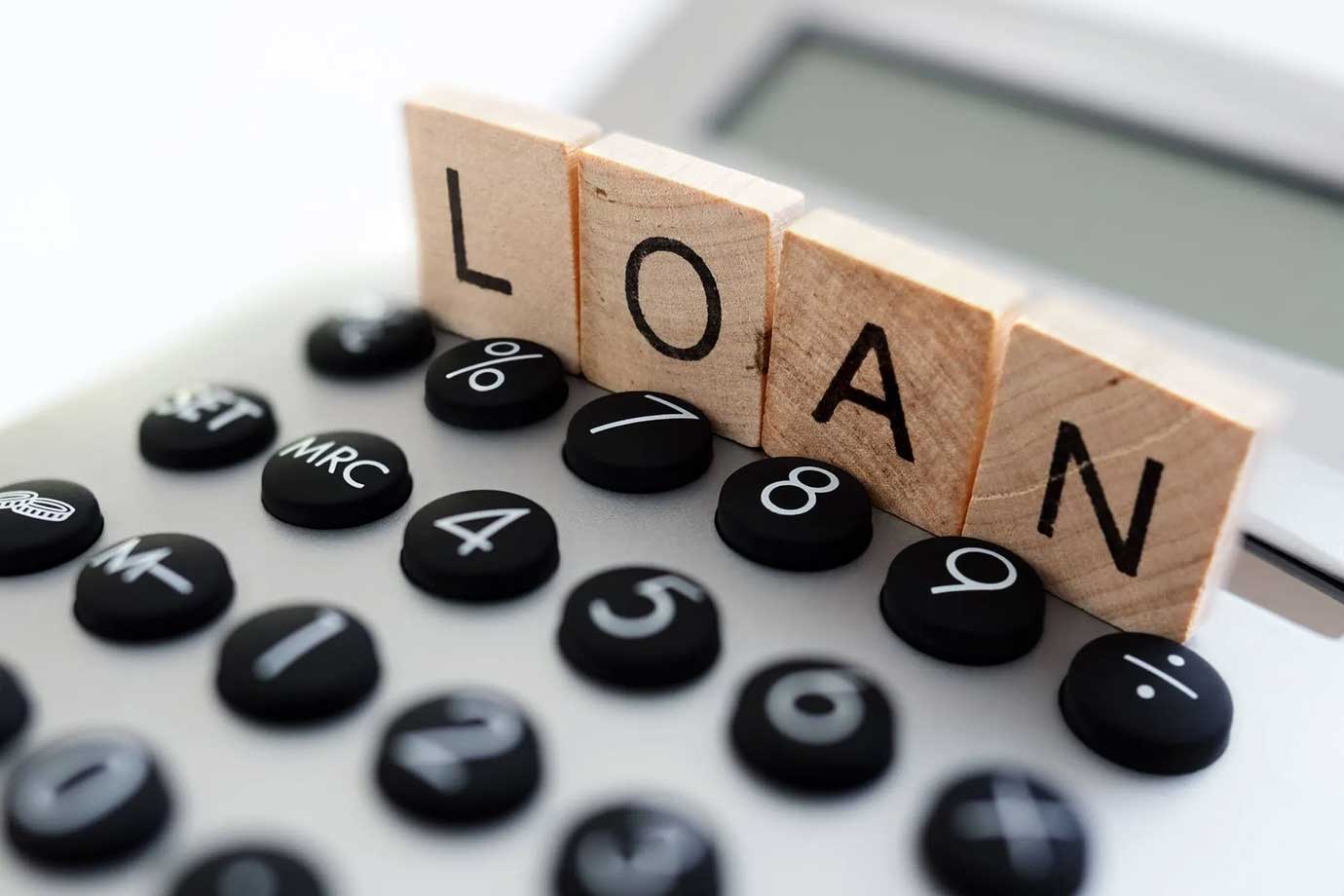On This Page:
What is the Principal of a Loan?
Is Initial Principal the Same as Loan Balance?
Difference Between Loan Principal & Interest
How Does Repaying Your Loan Principal Work?

Find out your loan principal now!
- It takes only 5 minutes to find out.
- No affects on your credit score.
- Fast and easy calculation process of your loan principal.
When taking out a loan, the principal amount is the sum borrowed that must be paid back over time. Unlike accumulating interest charges, the initial principal stays the same from start to finish. Making regular, on-time payments to chip away at that original loan amount is crucial in responsibly managing debt and building your credit. As you steadily pay that principal, you prove your trustworthiness to future lenders.
However, missing monthly payments can negatively impact your credit score and make securing favorable rates harder. Understanding what is the principal on a loan and how it fits into the equation, separate from interest fees, helps borrowers make smart money moves.
Key takeaways:
- The amount you initially borrow is called the loan principal. This principle applies to home loans (sometimes on homeowners insurance), business loans, student debt, car loans, and credit card balances.
- Payment schedules usually require paying all the interest rates first before hitting the principal amount. As you pay the principal over time, your interest monthly payments steadily drop.
- Amortization is a process of determining how your loan monthly payments are spread out over time. It helps smooth out expenses month to month.
- By amortizing loans into payment tables, banks give you an idea of how different loans will impact your budget over 5, 10, or 30 years.
- Some types of loans let you pay down the principal directly without penalty. It can reduce the total interest you pay in the long run.
What is the Principal of a Loan?
The loan principal is the first sum of money you borrow before a lender stacks interest and fees on top. It’s the pure loan amount you get on hand. You can find the principal loan amount in a mortgage, car loan, student loan, credit card balance, etc.
Suppose you want to buy a house that costs $250,000. Next, you must make a down payment of 20%, or $50,000. As a result, the loan principal on your mortgage is $200,000. The repayment term is 30 years, and your loan provider then charges a fixed annual interest rate of 3% on this sum.
The monthly payment is $843, but it doesn’t include property taxes or insurance. Of that $843 payment, $500 covers your interest charge, and the remaining $343 goes toward your loan’s principal. After your initial monthly payment, your loan principal decreases from $200,000 to $199,657. Each subsequent month, interest is calculated based on the remaining principal, with the remainder of your payment reducing the principal further. This process repeats for 30 years until the loan balance is paid off completely.
Is Initial Principal the Same as Loan Balance?
The initial principal definition for a loan shows that it differs from the loan balance. However, these two are related. When you first take out a loan, the principal is the total amount you borrowed. But then you start making monthly payments, which reduces that principal amount over time. The loan balance is whatever you currently owe at any point. It changes as you make monthly payments and increases if interest or fees get tacked onto the amount you owe. So, the principal is the starting figure, and the balance is the fluctuating current figure that began on the principal but has moved up or down since then.
Principal on Investments
You might run into the word principal when talking about investing. What someone puts down as their cash at first is the principal, separate from any money they earn. With bonds, you get interest based on how much you initially put in. For stocks, your stake goes up over time beyond your first purchase from capital gains and price rises.
Loan Principals and Taxes
Principal loans’ amounts can be confusing when considering how paying them off affects your taxes. For example, your interest can reduce your taxes when making a monthly mortgage payment. But paying down the principal (the original amount you borrowed) doesn’t affect your taxes.
If you make a monthly mortgage payment, some of the interest you pay might be tax deductible, lowering your taxable income. So you end up owing less money to the taxman. However, there are certain limits on the deductible amount. You should check with an accountant to see if you qualify.
The interest rates for student loans, home equity loans, and some business loans may be tax-deductible, too. But there may be specific rules and spending restrictions applied.
Difference Between Loan Principal & Interest
To understand better the difference between principal and interest, we’ve made a concise table comparison with the main aspects:
| Aspect | Principal | Interest |
| Definition | The original amount borrowed or outstanding debt | The cost of borrowing money |
| Purpose | Represents the actual amount of the loan | Represents the cost of borrowing the principal |
| Portion of payment that goes toward it | Typically, increases over the loan term | Typically, decreases over the loan term |
| Payment | Principal payments reduce the loan balance | Interest loan payments compensate the lender |
| Calculation | Not subject to change unless monthly payments are made | Calculated as a percentage of the outstanding balance |
| Impact on total payment | Principal payments reduce the total loan amount | Interest payments contribute to the total cost of the loan |
Principal and interest are different concepts that matter in your loan costs. Calculating interest on a loan can seem confusing, but it’s straightforward using a simple formula. You take the amount you initially borrowed (the principal), multiply it by the interest rate the lender is charging you, and then divide it by the years you have the loan.
Let’s say you take out a $10,000 personal loan for some home improvements, and the lender charges you 5% interest per year. You plan to pay back the loan after one year. So, you would plug those numbers into the formula:
Interest = Principal x Interest Rate x Time
For our example:
Interest = $10,000 x 0. 05 (5%) x 1 year
Which equals $500
When the loan is due at the end of that year, you owe $10,500. The original $10,000 (the principal) is still there, plus $500 in interest charges.
How Does Repaying Your Loan Principal Work?
Paying back a loan involves more than returning the money you initially took out. You should pay back the principal, plus interest, like the borrowing fee. Here’s how it works:
Loan Payments Division
When you make a monthly payment on your loan, part of it goes toward knocking down the principal, and part of it goes toward covering the interest. Early on, more of your monthly payment gets used up by interest, and less chips away at the principal amount left to pay off.
Amortization
As you keep making payments month after month, the principal balance starts shifting. The lower your principal, the less interest charges. As time passes, the major part of the payment goes to the loan repayment. This process of steadily paying down debt through regular monthly payments over time is called amortization.
Principal-Only Payments
Some lenders let you make extra principal-only payments applied directly to pay down the principal balance instead of interest. Making those extra payments can help you repay the loan faster and save money on interest. When the principal drops, you pay less interest, leading to significant savings.
Identifying the Loan Principal
The loan statement clearly shows your monthly payment breakdown between the principal and interest. It will typically display the total payment amount, interest, and principal part you’re knocking down. If you’ve tossed some extra principal-only cash at your loan, your statement shows that, too. You can see how much extra principal you’ve knocked off so far.
Your Credit Score & Loan Principal
Your credit score and the loan principal amount you take out are tied together, influencing each other in specific ways. Here’s a quick look at how on-time payments toward the loan principal and the actual size of the loan principal can impact your credit score:
On-time payments boost your score
Monthly payment history is a big part of calculating your score, so punctual payments help make you look more creditworthy overall. Paying your loan principal on time shows lenders you can handle debt responsibly. For example, every on-time mortgage payment proves you’re a reliable borrower who can manage debt well. Steady, on-time payments towards the loan principal can improve your credit score.
Decreased credit usage ratio
Your credit utilization ratio (how much credit you use versus the total credit available) also greatly determines your score. When you take out a loan, the principal is the sum given to you. But as you gradually pay it down, your outstanding balance drops. This lower outstanding debt can lead to a lower usage ratio, which helps your score. A lower ratio shows lenders you are relying less on credit and are managing your debts properly.
Bottom Line
Understanding what loan principal means is crucial if you want to be financially savvy. It’s the core amount you borrow, without including interest payments or fees. It directly impacts your monthly payments and the total cost of the loan over time. Also, the key is decent credit, which decides if lenders will give you reasonable rates. Your credit score shows how reliable you are at managing money and debts.
If you get the hang of loan principal and how it connects to credit scores, you can make way smarter money choices as you work towards your financial goals. Whether you’re considering a new loan soon or want to raise your creditworthiness, grasping these basic concepts gives you power over your finances.
Explore our website if you want to get smarter about budgeting, building credit strategically, and controlling your money. Access our resources about responsible borrowing tailored to help you gain financial literacy, feel empowered, and improve your credit score.
Learn more:
- Understanding Interest Rates: Key Concepts Every Consumer Should Know – https://www.badcredify.com/guides/understanding-interest-rates/
- What Is An APR And How Does It Work? – https://www.badcredify.com/guides/what-is-an-apr/
- How To Get Overdraft Fees Refunded? – https://www.badcredify.com/guides/how-to-get-overdraft-fees-refunded/
External sources:
- Compound interest rate formula https://www.thecalculatorsite.com/finance/calculators/compound-interest-formula
- What is the loan balance? – https://www.lawinsider.com/dictionary/loan-balance
- All about credit utilization ratio – https://www.equifax.com/personal/education/debt-management/articles/-/learn/credit-utilization-ratio/

